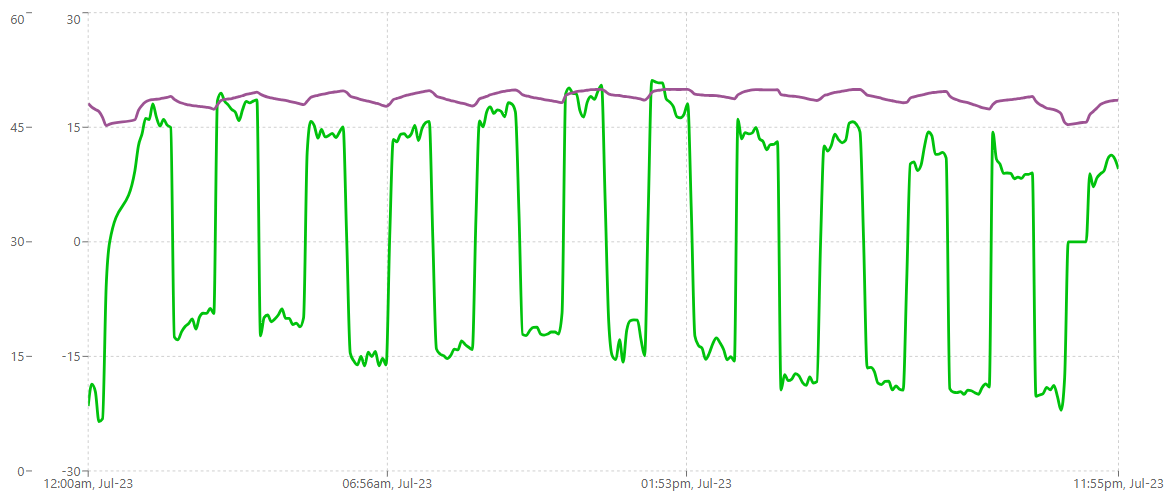Hi , Dear all,
I have a question regarding the lithium batteries cell balancing, if i have frequent charge discharge cycles as shown how cells are balanced? I have a 48 volt 100Ah batteries with 15 cells.
as shown there is very rapid charge and discharge cycles , will it provide the advertised cycle life.
graph is shown for a single day, does BMS balance the cells or there are some other circuitry.
further to add as the battery ages there is definitely variation in individual cell resistance /capacity , connections etc. what would the impacts ?


